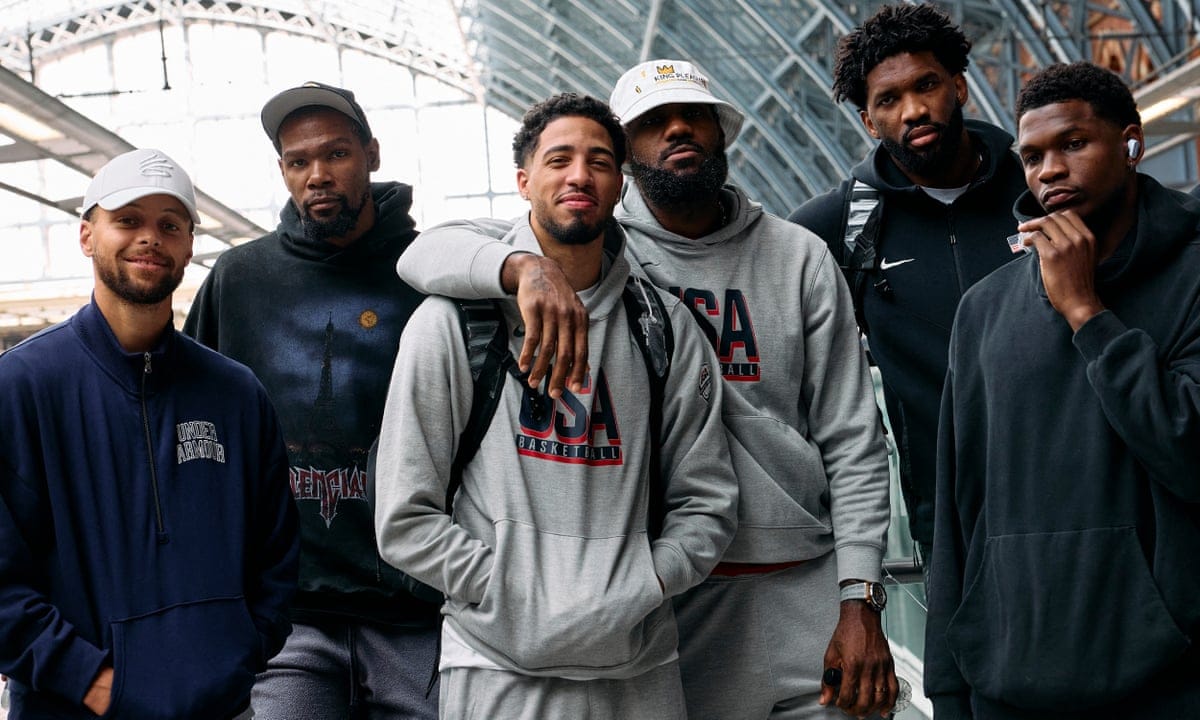The current model for selecting Team USA's Olympic roster raises concerns about its long-term effectiveness given recent underwhelming performances in major international competitions. This approach of assembling a "superteam" each Olympics has shown cracks, with questionable decisions and notable absences from expected players due to factors like shoe company politics or injuries.
The lack of young American superstars emerging as the generational leaders we've seen in recent years is one of the biggest challenges for USA Basketball's future success. While stars like LeBron James, Kevin Durant, and Stephen Curry have been instrumental in past victories, they are now aging and their presence on Team USA has diminished. This raises concerns about finding suitable replacements who can carry the torch into the future.
The federation's reluctance to hold tryouts or adopt a more structured development system is another issue that needs addressing. Instead, they rely heavily on subjective selections for the Olympic roster without much transparency in their process. This has led to instances like Walker Kessler being chosen over Utah Jazz rookie Derrick White just days into training camp and other inconsistencies affecting Team USA's performance.
Moreover, international basketball is growing at a rapid pace, with countries such as Canada, Australia, Greece, Serbia, and France showcasing their own talents in the global arena. This indicates that the gap between the US team and the world field is shrinking, emphasizing the need for USA Basketball to adapt its strategy.
In conclusion, while Team USA has a strong history of basketball success, there are significant concerns about the future effectiveness of their roster-building approach. To maintain its position as a dominant force in international competition, it's crucial that the federation reassesses and revamps its system to build sustainable teams over time while addressing issues like lack of young talent development and inconsistencies in selection processes.
Read next

Poppy McIlroy Emulates Father's Skill on Putts at Augusta National
Rory McIlroy's four-year-old daughter, Poppy, made a challenging putt in the Family Day Tournament ahead of the 89th Masters.
The Northern Irish golfer described this moment with his child as "quite enjoyable". “It’s just such an entertaining afternoon,” McIlroy commented while enjoying time out on

McIlroy asserts embracing 'heartache' from Masters could benefit his chase for victory in Augusta
Rory McIlroy believes embracing the "heartbreak" from his sporadic journey for Masters triumph could be crucial to securing another Green Jacket. His latest endeavor towards a career major achievement commences on Thursday at Augusta National.
McIlroy is reminded that nearly 11 years have elapsed since he last clinched

Lando Norris Supports FIA Action Against Red Bull's 'Tea Tray' Technological Advantage
Lando Norris has welcomed the FIA's response to a potentially illegal device found on his world championship rival Max Verstappen’s Red Bull vehicle, following concerns it might contravene regulations for performance enhancement during races when adjustments between qualifying and actual events are prohibited.
As he gears up

